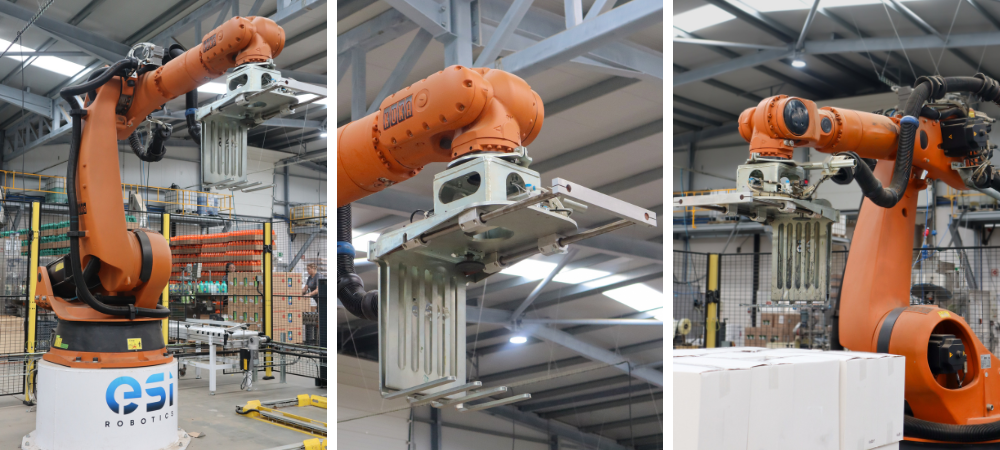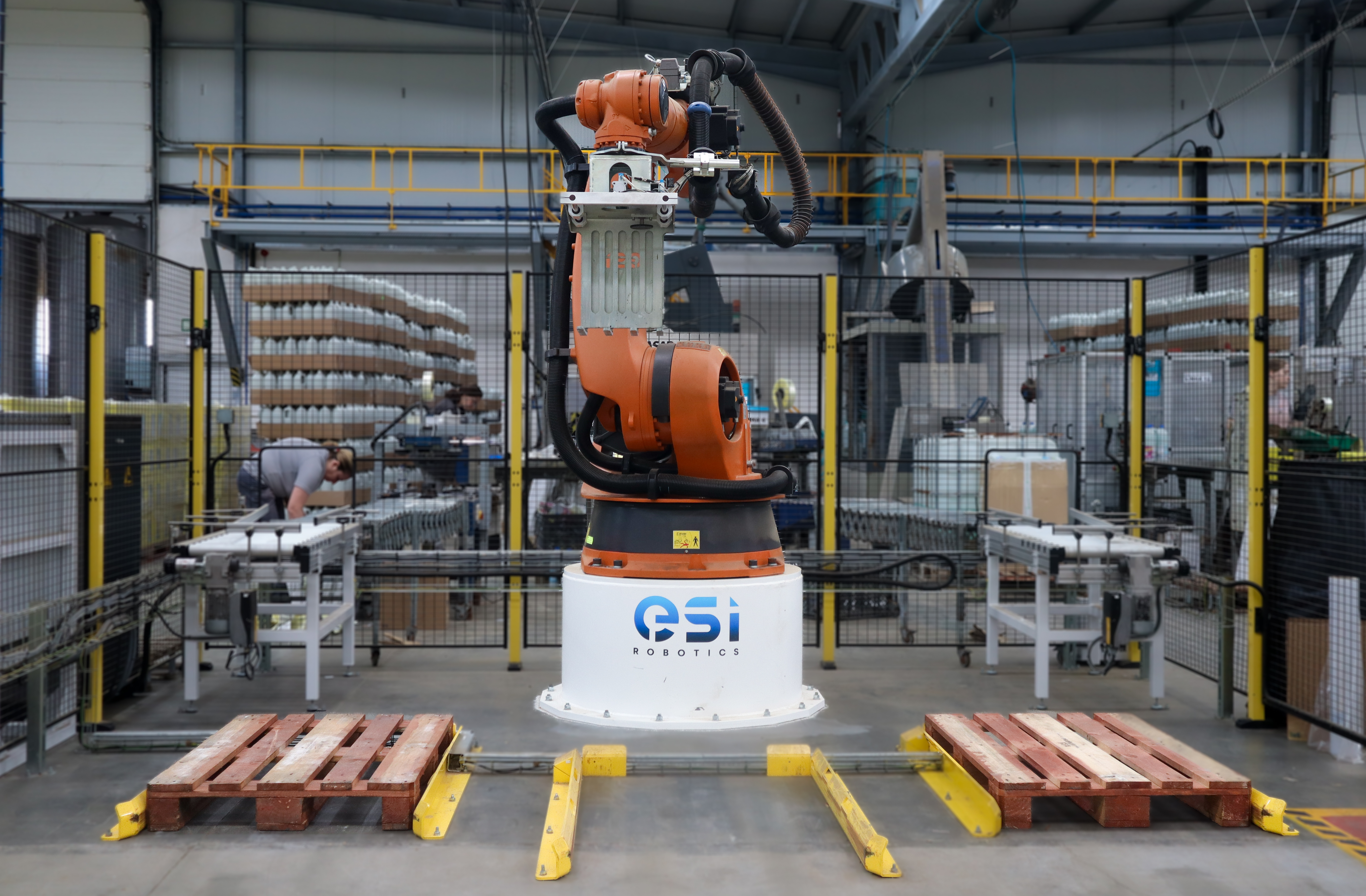ESI Robotics has successfully completed another project! This case study explores the successful implementation of a robotic cell dedicated to palletizing boxes in the detergent industry. The automation of this end-of-line process plays a crucial role in optimizing our client's operational efficiency, resulting in significant productivity gains.
Project' Goals
Palletizing is an important stage at the end of the line, involving the proper organization of boxes on pallets to facilitate transport and storage. This type of task is a monotonous and repetitive job that can pose health risks for workers, as it involves handling heavy loads.
The introduction of the automated system developed by ESI Robotics in this process is an effective way of increasing safety, efficiency and lowering operating costs. In addition, the automation of this logistics operation guarantees the safety of the product during its transportation, handling and storage.
ESI Robotics' Solution
The line maintains the work of operators, who are responsible for placing the product in the boxes and thus feeding the tape machines. Once the box is properly closed, it goes onto the motorized conveyors and advances to its final position. This robot, after detecting the presence of boxes, handles and transports the box to the pallet.

The robot receives the product from two different conveyors and takes off to them alternately. The cell includes three pallets and the robot transports the boxes to the nearest one. The central pallet is used when the nearest one reaches its capacity limit.
The operator is responsible for removing the full pallets and replacing them. The cell contains safety systems, which guarantee the safety of the operators when carrying out these tasks.
Second-hand robots: A sustainable opportunity
The reuse of robots previously used in other production lines or industries offers an ecologically sustainable alternative. The use of these robots, after being adapted to the needs of palletizing in the detergent industry, not only extends their useful life, but also reduces the need to manufacture new equipment, saving natural resources.

Results
The implementation of the robotic palletizing cell proved to be a success, and the client has already invested in four more cells. The automation of this end-of-line process contributes significantly to increasing productivity and reducing the error rate, which results in better-organized pallets and fewer losses during transport.

This case study highlights the effectiveness of automating end-of-line processes, in this case, the automatic palletizing of boxes. The successful implementation of this technology not only optimized the palletizing process but also demonstrated how automation and sustainability can be allied.
See also: Computer Vision and Robotics - A Successful Duo in Paper Bag Packaging
